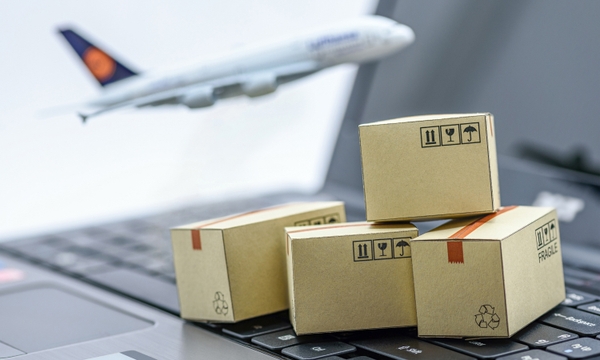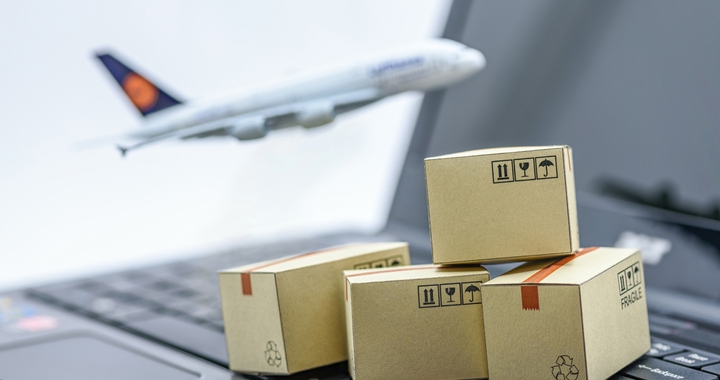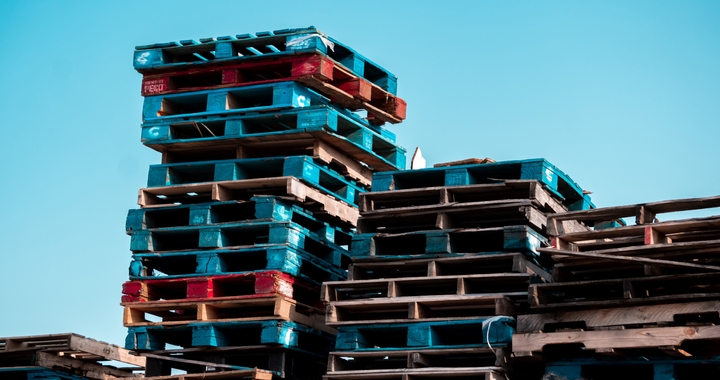Packaging for Air Freight


Your cargo will experience an arduous voyage when being shipped internationally. It's quite simple for something to go wrong and hurt your cargo, from handling to moving to the actual shipping itself.
Herein lies the value of appropriate packaging. You must make sure that you are taking the utmost precautions to protect your cargo throughout shipment, especially with air freight shipments. This guarantees that the carrier won't reject your cargo and prevents damage to your items.
Tips for Air Freight Packaging
It takes more than just placing your items in a box and calling it a day to package something for air freight. There are numerous additional factors to consider, including limitations on cargo size, air security requirements, the kind of box you choose and how you secure it, the distance between your items, labeling, and more.
Here are our best suggestions for packaging for air freight.
1. Know Restrictions on Cargo Dimensions
There are well-known restrictions on the kinds and sizes of cargo shipped using air freight. The height, length, and width of cargo are constrained when shipping by air.The maximum cargo dimensions for ordinary air freight are 2.44 x 3.15 m. If you follow the special equipment packing guidelines, you are permitted to ship material that exceeds these dimensions.
However, there are additional maximum heights in this situation, determined by the aircraft type.
2. Research Air Security Regulations
According to air security laws, your goods must go through an examination before being loaded aboard the aircraft and prepared for transportation. One of the following methods may be used to conduct the inspection:
- Piece/level examination: The regulated air cargo agent (RACA) examines each box and item in detail (RACA)
- Consolidated: cargo is loaded into unit load devices on pallets and stacked in boxes.
- Approved known consignor: does not need additional inspection or testing before transport.The majority of exams are performed using an x-ray machine.
Thus your cargo must fit inside of it for it to function. The cargo must specifically fit within the range of these measurements:
LWH: 1.20 x 1.20 x 1.53 m
There are weight restrictions as well, with a pallet's maximum weight being 1000 kg.
3. Use Strong and Sturdy Double-Walled Boxes for Air Freight Packing
To ensure the security of your cargo, you must carefully evaluate everything—even the box you select for air freight. Reused boxes don't offer a high enough level of security, so they should be of high quality and brand new.
We advise using a double-walled box since the layers of corrugated cardboard make it thicker and more durable. The greatest option for fragile cargo is also these.
You need to consider the following before packing your cargo into a box:
- Weight: Research the weight limits of the airplane that will carry your goods.
- Moisture: Examine the moisture and humidity levels to see if the box you use can shield your goods from them.
- Pilferage: Use a plain box without branding, logos, or other giveaways to indicate what the box contains to stop pilferage and protect your items.
4. Create Space Between Items
Make sure to leave room between the products when packing multiple things in a single box to prevent damage if the box is jostled or bumped. The easiest method is to bubble wrap each item individually and place corrugated inserts between each one for further protection.
5. Use Packing Tape
It's time to fasten the box itself after you've secured the stuff inside. The last thing you want to happen during transit is for your cargo to be lost or opened. Packing tape is your best buddy in this situation.
You want to tightly seal your box, leaving no gaps where water, mildew, or other contaminants could enter. It also depends on what kind of packing tape you use. Use thick, durable, high-quality packing tape that will stay sticky during the voyage.
6. Label Your Cargo Clearly
Your box must be correctly and legibly labeled to comply with air freight labeling regulations and ensure that the transport crew knows who owns the product.
Your package should be labeled based on its contents. Indicate on the packaging if your cargo is fragile and only intended for top-loading. In conformity with international laws, dangerous commodities must also be labeled.
7. Don’t Forget the Commercial Invoice
The commercial invoice should be included with your shipment to make it simple for customs to identify the shipment's origin and contents. Customs will delay your cargo shipment without the commercial invoice, which could result in fines and storage fees while the authorities wait for the right paperwork.
Always verify that the appropriate business invoice, which lists the items and their value, is included when sending air freight overseas. This way, customs can swiftly clear the products and avoid holding up your shipment.
What are Air Freight Pallets?
Pallets used for air freight are wooden or plastic containers that make it easier to handle, transfer, and consolidate cargo before shipping. Additionally, avoiding direct touch with the cargo reduces the possibility of damage and exposure.

Pallets for air freight should be big enough to hold the goods they are carrying and have a floor-bearing load greater than 100 pounds per square foot. You should always adhere to the rated capacity of the air freight pallet you are utilizing.
Before installing the goods, you should check to see if your pallet is intact and remove any protruding fasteners.
Importance of Following Air Freight Packaging Guidelines
According to recent data, incorrect or inadequate packaging results in $6 million in annual damages and accounts for 65% of cargo damage. If this doesn't clarify how important it is to adhere to the air freight packing regulations, we don't know what would!
You may reduce the chance of damage to your items during transport by carefully packing your air freight package. Proper packing will keep your items safe and secure despite all the handling, interaction, and movement involving moving vehicles, forklifts, and turbulence in the airplane.
Good labeling and suitable packaging will further instruct the ground workers on handling your product. For instance, cargo marked as "fragile" or "hazardous items" will be handled safer and more appropriately.
What Happens if Your Cargo is Not Packed Properly?
When sending items by air, proper packaging is essential. You risk having your cargo damaged during shipping and insecure during transport if you don't follow the right packaging instructions. If your goods don't adhere to the packaging requirements, air carriers could even reject them and decide not to ship them.
Damage to Your Air Freight Shipment
The handling, movement, and turbulence that can occur throughout the transportation process can easily cause damage to cargo that has not been packed properly. Additionally, you risk harming the products of other consignors, which may be a major hassle and expense.
To prevent harm to your cargo, other people's shipments, and transportation staff, you must adhere to the United Nations performance-tested criteria on the packaging, particularly if you are sending dangerous items and hazardous chemicals.
We advise you to purchase cargo insurance to safeguard your goods.
Rejection by the Carrier for Not Meeting Air Freight Requirements
The airline has every right to refuse to ship your cargo if it is inadequately wrapped when it reaches the airport, costing you more money and adding delays. Additionally, if you are transporting the products to your ultimate consumer, this could disrupt your supply chain.
Shipa Freight Can Help You with Packaging for Air Freight
You'll be glad to know that you have a trustworthy freight forwarding partner to assist you if you're uncertain of how to package your air cargo or if the procedure appears a little too hard for you.
We can assist you in meeting packing standards because Shipa Freight is familiar with all the criteria for transporting cargo internationally. You can be sure that your items will be correctly packed and arrive at their destination without delays, additional costs, or inconvenience on your part, thanks to our knowledge, experience, and commitment to customer care.
Along with packaging, we can assist you in getting your goods ready for shipping. For you to save money, we provide the most affordable rates. Additionally, we have a digital platform that streamlines air transportation.
You may order a shipment, monitor your shipment, and keep track of your cargo in real-time, all from the convenience of your device. Additionally, you'll have access to a pool of shipping specialists and a customer support team that is available around the clock to assist you!
With Shipa Freight, you can experience the difference in air freight shipment. Contact us to find out more.


